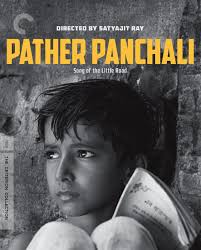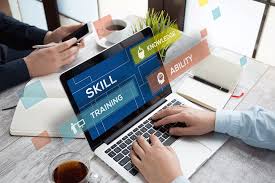
Essay Questions
Order Instructions:
Assignment 4 Objectives:
1. Describe the vision of an organization as it relates to the strategic process
2. Describe the importance of the concerns of the employees as related to strategy
3. Describe the importance of the public image of an organization as related to strategy
4. Describe the importance of the customers to the organization as related to strategy
5. Analyze the external forces that affect organizations
6. Analyze the internal forces that affect organizations
7. Describe the interrelationships among the functional areas of business
8. Describe SWOT Matrix, SPACE Matrix and other strategy tools
Assignment Description: 4 Essay Questions.
Each essay question should be written using APA formatting, must have at least 1external source and a minimum length of 350 words for each essay. See the grading rubric for additional details.
Essay 1:
After watching the videos on iRobot and the video on how to perform a SWOT analysis in week 4 describe and assess iRobot’s strengths, weaknesses, opportunities, threats and the internal and external forces on the company.
• Alanis (2012). How to Complete a SWOT Analysis.
Video Retrieved from: http://www.youtube.com/watch?v=0D2fT6obqdg
• IRobot Video
http://www.youtube.com/watch?feature=player_embedded&v=9Ud70koXT_M
Essay 2:
Analyze iRobot’s overall strategies you see them following and the interactions between the different functional departments (R&D, Marketing, Manufacturing, Service, finance..etc.) within iRobot. External references are encouraged such as iRobot’s annual reports, where the company strategy is described
(http://investor.irobot.com/phoenix.zhtml?c=193096&p=irol-reportsannual).
You are to analyze the company strategy and not just copy their strategy.
Essay 3:
Analyze the Patagonia case in Week 2 in addition to other sources on how their suppliers, public image and government regulations have shaped their strategy, mission and vision.
(Check the upload file for the Patagonia case)
Essay 4:
Analyze how The Disney Company’s strategy is shaped with regards to the importance of employees, customers and public image. Reference The Disney Company case in our Week 1 materials.
• In order to complete this part, you have to follow the Cohesion Case (The Walt Disney Company – 2001) in Strategic Management a competitive Approach 14th Ed. By Fred R. David
SAMPLE ANSWER
Essay1
Each company has factors that either motivate its performance or hamper it. The factors that motivate its performance are known as strengths while those that hamper it, are known as weaknesses. It is a common feature for a company to have both divides of the factors, however, for it to thrive; it should have more strength as opposed to weaknesses. An evaluation conducted to analyze a company’s strengths and weaknesses is commonly referred to as a SWOT Analysis (Alanis, 2012). This evaluation incorporates strengths, weaknesses, opportunities and threats. This write up will analyze iRobot’s SWOT Analysis.
iRobot has a number of strengths that have made it remain a competitive brand in the region (iRobot SWOT Analysis, 2014). Notably, a strong brand equity, and market share leadership have ensured that it tops the scales. Additionally, innovativeness, cost advantage, strong management team, and reputation management have ensured that it remains unwavering in the stiff competition in the robotics industry. iRobot is a strong brand whose uniqueness is unmatched by any other. Its superior brand has earned it the credit of manufacturing equipment even for the United States navy, an enigma of military personnel (iRobot SWOT Analysis, 2014).
That notwithstanding, the company has a few weaknesses that threatens its expansive market. A number of legal proceedings have been filed against the company, stifling its growth and profitability. Rare system malfunctions have led to injuries during the use of the apparatuses, leading to apportionment of liability to the company. Additionally, the ever-growing industry has threatened its market share through the entry of new players to the market.
On the other hand, the growing opportunities arising promise to steer the company to some great heights. The on-line business boom has diversified its market, with major sales abroad. Product and service expansions have also ensured that the company remains a lead player in the industry.
iRobot is equally faced by a number of threats. Economic meltdown in major market segments has reduced sales leading to low profitability, sometimes-even losses. Price wars with rival companies have also occasioned losses to the company by leading to enormous price cuts by iRobot, in order to boost sales. Overly, iRobot is an enigma in the robotics industry. The financial statistics, market share leadership and on-line presence all tell of this story.
References
Alanis, 2012. Video. Available at: http://www.youtube.com/watch?v=0D2fT60bqdq
iRobot. SWOT Analysis. (2014). Video available at: http://www.youtube.com/watch?feature=player_embedded&v=9Ud70koXT_
Essay 2
Company strategy refers to the mechanisms through which a corporation seeks to achieve its long-term goals and objectives (Dess, et al., 2005). Outlining the company’s objectives is what is generally referred to as strategic management. The process of strategic management involves setting forth specific goals and objectives, and designing mechanisms of implementing them. Thus, in analyzing iRobot’s strategy, this discourse will first outline the company’s goals and evaluate its methods of implementing them. Further, an analysis of the interactions between the different departments within the organization will be done in assessing their overall impact on the company’s performance.
The company’s overall objectives include market expansion, continued growth, brand strengthening, and developing a community of third-party developers around its platforms. The company has set forth an elaborate scheme on how it intends to achieve the set targets and remain a competitive brand in the region. iRobot is a lead manufacturer of robots used in cleaning, defense, and mobility. The company’s market presence is impressive, as evidenced from the annual returns. In the quarter ended 21st October, the company net earnings exceeded the projected earnings, an indication that it was performing above optimum (iRobot Annual Report, 2014).
iRobot’s strategy is broad and most flexible. The strategy is market-oriented, by seeking to tap into the expansive American market and beyond. From the start, it captures the company’s aspirations of market penetration by incorporating a customer-oriented approach. At iRobot, customer satisfaction comes first in designing their products. Through this, the company has remained a competitive brand through retaining its old customers while attracting more. As a result, its earnings have increased tremendously, often, exceeding expectations (iRobot Annual Report, 2014).
The company’s impressive performance could be attributed to its excellent internal organization (Dess, et al., 2005). The managerial system at iRobot adopts an elaborate departmental system that is intricately linked to enhance performance and effectiveness. Information relay between the different markets ensures that production is optimized and market specific. For instance, the marketing department oversees the sale of manufactured products. From the sale reports, it assesses the impacts of the products on the market. Sale statistics are made to project sales and advise the production department on what aspects to improve or what products to manufacture in larger quantities. Overly, the company’s strategy has enabled it to make the great strides it has made thus far.
References
iRobot Annual Report. (2014). Available at: http://investor.irobot.com/phoenix.zhtml?c=193096&p=irol-reportsannual
Dess, G., Lumpkin, T. & Marilyn L., (2005). Strategic Management. 2005 New York: McGraw Hill Irwin,
Essay 3
Whether a company will be able to meet its long-term goals and objectives largely depend on its strategic management design. The design is usually the road map to the company’s success. In instances where all the systems work well, a company’s strategic management system enables it to attain its profitability goals. Within any given organization, there are intricate factors that shape its strategic management design. This discourse will analyze how suppliers, public image, and government regulations have shaped Patagonia Incorporated’s strategy, mission and vision.
The mission of a company describes the scope of its formation (Fred, 2011). A mission statement is the aspirations, and objectives of the company’s formation. Patagonia is a clothing company that makes outdoor wear, and sporting gear, including surfing, climbing, and skiing outfits. In the production process, the company has to source resource materials for the manufacturing process. The availability of resource materials determines whether the company will be able to manufacture its goods effectively. Therefore, in designing outfits of a particular quality or to a certain market, the company has to gauge whether it can source the required materials (Patagonia, 2014).
Government policies and regulations have an impact on the general performance of a company. The policies may be as to quality, pricing, or environmental protection. In the event that the production process involves use of chemicals or leads to over accumulation of wastes, the government may issue stringent licensing or waste disposal mechanisms. Such strict policies may hamper the production process or reduce profitability due to strict compliance with the law. The state of California, where the company is situated, has strict rules on pollution. In resonance with the company’s mission of producing the best products while conserving the environment, this factor will play a crucial role in shaping the company’s strategies (Patagonia Website).
A company’s continued presence in the market is greatly depended on its public image. Public image is the outward appearance of the company in respect of certain the perception of its external environment (Fred, 2011). The parameters of public image include environmental conservation and corporate social responsibility. In order to safeguard its public image, a company has to act in a socially responsive manner, and tailor its operations to impress the public while maintaining its profitability margins. Patagonia gives out 1% of its profits to environmental conservation. This act helps boost its image in the public as a socially responsive company.
Companies are established within society and to serve communities, in as much as they seek profits. As a result, they must tailor their operations to suit the demands of the society they exist in. To this end, suppliers, public image and government regulations influence greatly a company’s strategy, mission and vision.
References
Fred, R., D. (2011). Strategic Management Concepts. London: Prentice Hall.
Patagonia. (2014). Available at: www.google.com/m?=patagonia or www.patagonia.org
Essay 4
Walt Disney is undoubtedly a favorite company to movie fans. As one of the oldest entertainment companies, it has withstood the wave of change that has seen similar companies collapse. To remain competitive for such a long period, the company must have definitely adopted an excellent approach to management. This write up will analyze the company strategic management design. In analyzing the design, the discourse will draw from The Cohesion Case (Fred, 2001), the importance of employees, customers and public image in strategic management.
According to Scott Soneshein (2006), the importance of employees in the strategic management of a corporation is cannot be overlooked. Companies generally develop blueprints of performance within any specific time, usually prorated to periods of a financial year. Blue prints remain on paper, while the execution task rests solely on the employees of the company. The employees are responsible for performing the tasks relevant to meeting the company’s objectives and goals. Scattered through several departments in a company, the employees are the breath of the company, without whom the company is just a shell. Walt Disney recognizes this aspect by holding the employees dear. The employees are well motivated through impressive remuneration and bonuses. Through this, they work to foster the company’s aspirations and long-term goals.
Customers are an equally important asset to the company. The customers are the market for the company’s products. A company earns its revenue from the payment of its products once sold. Accordingly, a company that desires to maximize on its profits must seek ways of enticing customers and retaining them. A sure way of going about this is ensuring that a company’s products are of the desirable quality and priced strategically (Soneshein, 2006). Disney movies are certainly some of the best the entertainment industry savors. The movies have also been made socially responsive through age restriction and content classification, to make them non-offending to audiences. In this way, the customers are satisfied and encouraged to form a continuous patronage with the company.
At the end of it all, a company ought to keep a good public image in order to appeal to its loyal customers and attract new ones. A good image is curved out of social responsiveness and corporate responsibility. A report released by Social Business 23 July 2014, listed Walt Disney as one of the top five socially responsive companies in the world. As a result, the public feels appreciated by the company and continues its patronage with the company. Certainly, the afore-discussed elements constitute a company’s valuable strategy assets. They are what builds a company or breaks it.
References
Soneshein, S. (2006). Explaining Employee Engagement with Strategic Change Implementation: A Meaning-Making Approach. Jones Graduate School of Management, Rice University: Texas.
Fred, R., D. (2011). Strategic Management Concepts. London: Prentice Hall
We can write this or a similar paper for you! Simply fill the order form!











